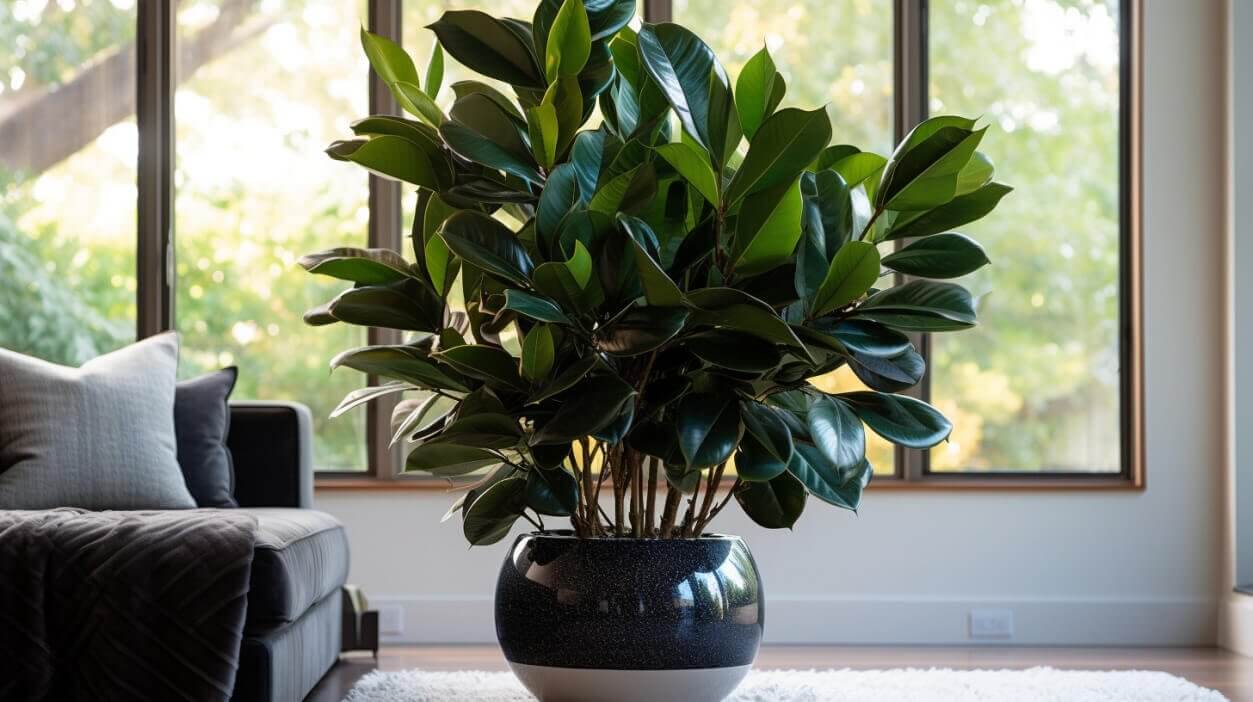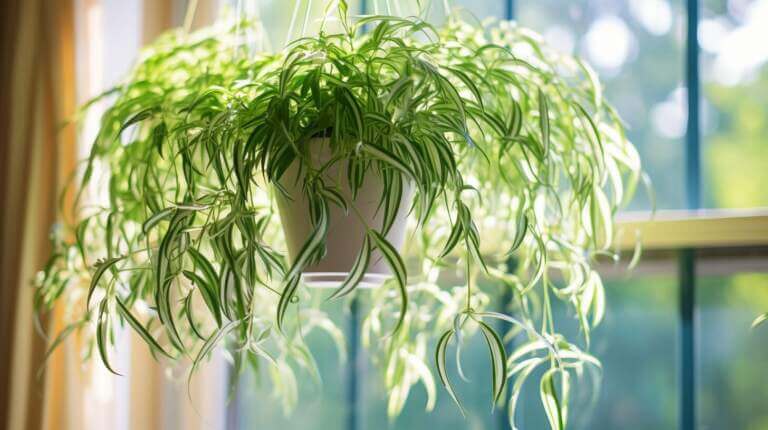How To Cut Back An Overgrown Rubber Plant: Tips For Safely Prune Rubber Tree
It’s time to give your rubber plant a little TLC! If you find that your rubber tree has grown overgrown and unruly, fear not. With a little bit of pruning, you can transform your plant into a thriving beauty. Here are some tips for safely trimming your overgrown rubber tree.
Importance of trimming overgrown rubber trees(ficus elastica)
Pruning your rubber plant is essential for its overall health and appearance. Trimming allows you to shape the plant, stimulate new growth, and remove any dead or damaged leaves. Not only does this help improve the plant’s aesthetics, but it also promotes better air circulation and prevents the growth of pests and diseases.
Tips for safely trimming overgrown rubber trees
- Choose the right tools: Before you begin, make sure you have a pair of clean, sharp pruning shears or scissors. Dull or dirty tools can damage the plant, so it’s important to keep them clean and sharp.
- Identify areas to prune: Take a close look at your rubber plant and identify any branches or leaves that appear unhealthy, overgrown, or damaged. These are the areas you should focus on when pruning.
- Start with pruning dead or yellow leaves: Begin by removing any dead or yellow leaves. Cut them off at the base where they meet the main stem. Be careful not to damage the healthy leaves during the process.
- Trim overgrown branches: Look for branches that have become too long or leggy. Trim them back to a desirable length, cutting just above a node or leaf. This will encourage new growth and help maintain a more compact shape.
- Prune with intention: As you prune, keep in mind the overall shape and size you want your rubber plant to be. Aim for a balanced appearance and remember to step back and assess your progress as you go.
Remember, pruning is a gradual process, and it’s better to under-prune than over-prune. Take your time and enjoy the process of transforming your overgrown rubber tree into a thriving, well-maintained beauty.
When to Prune a Rubber Plant
Flexibility of pruning timing
When it comes to pruning your rubber plant, the good news is that you have some flexibility in timing. Ideally, you want to prune during the active growth period, which typically falls between spring and summer. This is when the plant is most likely to produce new growth and heal quickly after pruning. However, if you miss this window, don’t worry! You can still prune your rubber plant throughout the year, as long as you take certain precautions to ensure its health.
Considerations for removing out-of-place branches
Trimming overgrown rubber trees often involves removing branches that have grown in unwanted directions or have become too large for your space. Here are a few key considerations to keep in mind when pruning out-of-place branches:
- Proper Tools: Invest in a sharp pair of pruning shears or a pruning saw to make clean and precise cuts. Using dull or unsuitable tools can cause damage to the plant.
- Start Small: If you’re uncertain about how much to prune, it’s better to start with minimal pruning and observe the plant’s response. You can always trim more in the future if needed.
- Angled Cuts: When removing a branch, make an angled cut just above a leaf node or bud. This will help the plant heal faster and reduce the risk of rot or disease.
- Clean Cuts: Always ensure that your cutting tools are clean and disinfected before making any cuts. This helps prevent the spread of disease or pests.
Remember, the goal of pruning is to maintain the overall health, shape, and size of the plant. Take it slow and pay attention to how your rubber plant responds to each pruning session. With a little patience and care, you can safely trim an overgrown rubber tree and help it thrive!
I love having my Rubber Plant (Ficus elastica) in my home, but it can sometimes become overgrown and unruly. That’s when I know it’s time to give it a good pruning session! Pruning not only helps maintain the plant’s size and shape but also promotes healthier growth. Here are some tips for safely trimming an overgrown Rubber Tree.
1. Pruning Methods
There are a few different pruning methods you can use for your Rubber Plant:
Cutting above nodes or leaf scars
To encourage new growth and prevent your plant from becoming too leggy, make cuts just above leaf scars or nodes. This technique stimulates the plant to produce new branches and leaves, resulting in a fuller and more compact appearance.
Removing a third to half of branches
If your Rubber Plant has become extremely overgrown, you may need to take more drastic measures. Remove about a third to half of the branches, focusing on the ones that are most crowded or growing in awkward directions. This will allow more light and airflow to reach the plant, promoting better overall growth.
2. Tools and Precautions
When pruning your Rubber Plant, it’s important to use clean and sharp tools. This helps prevent the spread of diseases and allows for cleaner cuts. I recommend using clean pruning shears or sharp scissors for smaller branches and a hand saw for larger ones.
Another precaution to take is wearing gloves to avoid any potential irritation from the plant’s sap. While the sap is not toxic, it can cause skin irritation in some individuals. So, protect your hands and make the pruning process more comfortable.
Pruning your overgrown Rubber Plant can be a simple and satisfying task. Just remember to prune during the plant’s active growing season and provide proper care after pruning to help your plant recover and thrive.
Prune Your Rubber Tree Plant To Achieve Desired Shape
Studying tree shape before pruning
As a proud owner of a rubber plant, achieving the desired shape is an important aspect of plant care. Before grabbing your pruning tools, take a moment to study the shape of your rubber tree. Observe the branches and leaves to determine which areas need pruning to achieve the desired shape. Are there any branches growing in an undesirable direction? Are there too many leaves crowding one area? By identifying these areas, you can create a clear plan for pruning.
Using a sharp knife or garden shears
Once you have studied the tree shape and identified the areas that need pruning, it’s time to get your tools ready. For safe and effective pruning, make sure you have a sharp knife or garden shears. Dull tools can cause unnecessary damage and can make the pruning process more difficult. Start by disinfecting your tools to prevent the spread of any diseases.
When making cuts, it’s important to be precise and careful. Begin by removing any dead or damaged branches. If you want to promote a bushier growth, consider trimming the tips of healthy branches. Avoid cutting too close to the main stem, as this can lead to an open wound that is vulnerable to infections. Instead, prune just above a leaf node or a side branch to encourage new growth in the desired direction.
Remember to step back and evaluate the shape as you prune. Take breaks to assess your progress and make any necessary adjustments to ensure you are achieving the desired shape. With patience and careful pruning, you can transform an overgrown rubber tree into a beautifully shaped plant that enhances your space.
Note: Be cautious when pruning a rubber plant, as the milky sap it produces can cause skin irritations. It’s advisable to wear gloves and wash your hands thoroughly after pruning to avoid any potential reactions.
Specific Pruning Purposes
Pruning a rubber plant might seem intimidating at first, but with the right techniques and a little bit of confidence, you can safely trim your overgrown rubber tree to keep it healthy and looking its best.
1. Containing Growth
One of the main reasons you might want to prune your rubber plant is to contain its growth. These plants can grow quite tall and wide, and if left unchecked, they can quickly take over your living space. Pruning allows you to control the size and shape of your plant, ensuring it fits well within your chosen space.
Removing the Entire Crown
If your rubber tree has become unruly and you want to start fresh, removing the entire crown can be an effective solution. This involves cutting the stem just above the soil line, removing all branches and foliage. With proper care, a new crown will eventually grow, giving your rubber plant a fresh start.
Trimming the Plant to Desired Height
If you would like your rubber plant to maintain a certain height, regular trimming is necessary. To do this, identify the height you desire and cut the main stem just above a leaf node. This will promote branching and encourage your plant to grow fuller and bushier.
Remember to always use clean and sharp pruning shears to prevent damage and ensure a successful pruning session. Additionally, it’s important to prune during the active growth phase of your rubber plant, which is typically spring or early summer.
By following these pruning tips, you can help your rubber plant thrive and keep it looking beautiful in your home or office. So don’t be afraid to give it a trim and enjoy the rewards of a well-maintained and happy rubber tree.
FAQ
How do I prune a rubber tree houseplant?
Pruning a rubber plant is a great way to keep your plant looking tidy and encourage bushier growth. To prune your rubber plant, you will need to make your cuts just above a leaf node. This will encourage new side shoots to grow.
When is the best time to prune a rubber plant?
The best time to prune a rubber plant is in late spring or early summer, when the plant is actively growing. This will give the plant enough time to recover and grow new branches before winter.
Why do we need to Prune Rubber Trees?
Pruning is important for rubber plants because it helps promote a bushier plant and prevents the plant from becoming too leggy or top-heavy. Pruning also helps remove any dead or damaged branches, keeping the plant healthy.
Can I propagate my rubber plant through pruning?
Yes, you can propagate your rubber plant through pruning. Simply take cuttings from the original plant, making sure to include at least two to three leaves on each cutting. Place the cuttings in water or a moist potting mix, and they will develop roots to become new plants.
How should I make my cuts when pruning a rubber plant?
When pruning a rubber plant, it is best to make clean cuts straight across the stem branches, just above a leaf node. This will ensure proper healing and encourage new growth.
Will pruning my rubber plant damage it?
No, pruning your rubber plant will not damage it. In fact, rubber plants respond very well to pruning and can benefit from regular trimming to keep them healthy and attractive.
Can I prune the branches that have plant sap?
It is best to avoid pruning branches that have plant sap. The sap can be messy and sticky, and it can also harm the plant if too much is removed. Instead, focus on pruning healthy branches without any sap.







